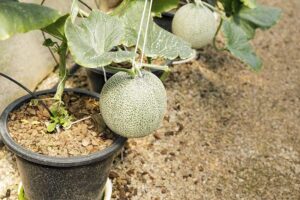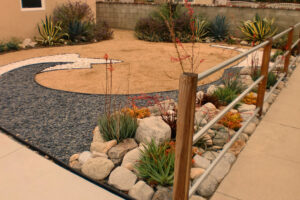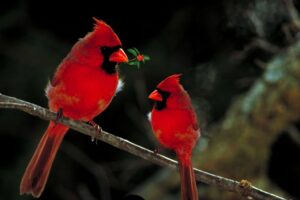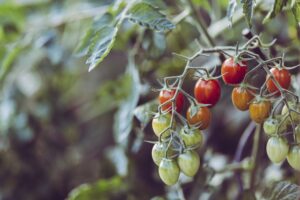
House plants with purple and green leaves are captivating additions to indoor spaces, offering a unique blend of color and charm that enhances any décor. From their botanical characteristics to their care requirements and aesthetic appeal, these plants are gaining popularity among plant enthusiasts and interior designers alike. In this article, we explore the fascinating world of house plants with purple and green leaves, uncovering their botanical secrets, care tips, and the myriad benefits they offer beyond their aesthetic allure.
I. Introduction
A. Overview of House Plants with Purple and Green Leaves
House plants with purple and green leaves, also known as variegated plants, are admired for their vibrant foliage and striking color combinations. These plants add a touch of sophistication and visual interest to indoor spaces, creating focal points and conversation starters.
B. Popular Varieties
From the dramatic foliage of the Purple Waffle Plant (Hemigraphis alternata) to the delicate beauty of the Persian Shield (Strobilanthes dyerianus), there is a wide range of house plants with purple and green leaves to choose from. Each variety offers its unique color patterns, growth habits, and care requirements, catering to different tastes and preferences.
C. Growing Popularity and Appeal
With the rising interest in indoor gardening and biophilic design, house plants with purple and green leaves are experiencing a surge in popularity. Their eye-catching foliage adds depth and dimension to interior spaces, creating a sense of connection to nature and promoting well-being.
II. Botanical Characteristics
A. Genetic Factors
1. Anthocyanin Production
The purple coloration in the leaves of house plants is often attributed to the presence of anthocyanin pigments, which are responsible for the vibrant hues seen in various plant tissues. These pigments accumulate in specialized cells called vacuoles, imparting shades of purple, red, or blue to the foliage.
2. Chlorophyll Content
Despite their purple pigmentation, the leaves of these plants still contain chlorophyll, the green pigment essential for photosynthesis. The combination of anthocyanins and chlorophyll results in the unique color patterns observed in variegated leaves, where shades of purple and green interplay harmoniously.
B. Leaf Morphology
1. Color Patterns
House plants with purple and green leaves exhibit a diverse array of color patterns, ranging from subtle variegation to bold splashes of purple against a green background. These patterns may be evenly distributed across the leaf surface or concentrated in specific areas, adding visual interest and complexity.
2. Leaf Structure
In addition to their color patterns, the leaves of these plants vary in shape, size, and texture, contributing to their overall aesthetic appeal. Some varieties have broad, lance-shaped leaves, while others boast intricate lobes or serrated edges, creating a dynamic interplay of form and color.
C. Environmental Influences
The intensity of purple coloration in the leaves of house plants can be influenced by environmental factors such as light exposure, temperature, and nutrient availability. Optimal growing conditions, including moderate light levels, consistent temperatures, and balanced fertilization, help maintain vibrant foliage coloration throughout the growing season.
III. Care and Maintenance
A. Light Requirements
1. Optimal Light Conditions
House plants with purple and green leaves thrive in bright, indirect light conditions, where they receive sufficient sunlight to support photosynthesis without being exposed to direct sunlight, which can cause leaf burn. Positioning these plants near east or west-facing windows ensures they receive the ideal amount of sunlight for healthy growth.
2. Avoiding Sunburn
To prevent sunburn and minimize stress on the plants, it’s essential to acclimate them gradually to increased light levels, especially if moving them to a sunnier location. Use sheer curtains or blinds to filter sunlight and provide shade during the hottest part of the day, particularly in summer months.
B. Watering Practices
1. Moisture Needs
House plants with purple and green leaves prefer slightly moist, well-drained soil that allows water to penetrate evenly throughout the root zone. Water these plants when the top inch of soil feels dry to the touch, taking care not to overwater, which can lead to root rot and other moisture-related problems.
2. Preventing Root Rot
To prevent root rot and maintain healthy root systems, ensure proper drainage by using pots with drainage holes and avoiding waterlogged soil conditions. Allow excess water to drain away freely after each watering, and empty saucers to prevent water from accumulating around the roots.
C. Soil and Fertilization
House plants with purple and green leaves benefit from a rich, well-aerated potting mix that provides adequate nutrients and supports healthy root development. Use a balanced, water-soluble fertilizer formulated for indoor plants, applied at half the recommended strength every 4-6 weeks during the growing season.
IV. Design and Aesthetic Appeal
A. Interior Design Trends
1. Complementary Colors
House plants with purple and green leaves complement a wide range of interior design styles and color palettes, adding a pop of color and personality to any space. Pairing these plants with complementary hues such as gold, teal, or coral creates a cohesive, visually pleasing aesthetic.
2. Accent Pieces
Incorporating house plants with purple and green leaves as accent pieces or focal points enhances the overall design scheme of a room, drawing the eye and creating visual interest. Place them on shelves, tabletops, or plant stands to elevate the décor and create a sense of harmony and balance.
B. Visual Impact
1. Texture and Contrast
The contrasting colors and textures of purple and green foliage create dynamic visual effects that capture attention and stimulate the senses. Textured leaves add depth and dimension to indoor spaces, creating visual intrigue and inviting closer inspection.
2. Foliage Arrangement
Experimenting with different foliage arrangements and groupings allows for creative expression and customization in interior design. Mix and match house plants with purple and green leaves with other varieties to create lush, layered displays that showcase the beauty and diversity of nature.
C. Seasonal Variations
House plants with purple and green leaves offer year-round beauty and appeal, with foliage coloration that may intensify or change subtly with the seasons. Embracing these seasonal variations adds depth and nuance to indoor landscapes, reflecting the cyclical rhythms of nature.
V. Benefits Beyond Aesthetics
A. Air Purification
1. Phytochemicals
House plants with purple and green leaves contribute to indoor air quality by absorbing harmful pollutants and releasing oxygen during photosynthesis. Phytochemicals present in the leaves help neutralize toxins, including volatile organic compounds (VOCs), and improve respiratory health.
2. Oxygen Production
In addition to air purification, house plants with purple and green leaves oxygenate indoor environments, creating a fresh, invigorating atmosphere that promotes well-being and productivity. Increasing oxygen levels can enhance cognitive function, elevate mood, and reduce fatigue and stress.
B. Stress Reduction
1. Biophilic Design
Incorporating nature-inspired elements such as house plants with purple and green leaves into indoor spaces fosters biophilic design principles, which emphasize the innate human connection to nature. Surrounding ourselves with living plants enhances our sense of well-being and satisfaction, reducing stress and anxiety.
2. Psychological Effects
Studies have shown that interacting with indoor plants can have positive psychological effects, including reduced stress levels, improved mood, and increased feelings of relaxation and contentment. House plants with purple and green leaves provide a sense of calm and tranquility, creating sanctuary-like retreats within the home.
C. Educational Opportunities
House plants with purple and green leaves offer educational opportunities for both adults and children, fostering curiosity, creativity, and a deeper appreciation for nature. Observing plant growth, conducting experiments, and learning about botanical diversity enriches our understanding of the natural world and encourages environmental stewardship.
In conclusion, house plants with purple and green leaves are not only aesthetically pleasing but also offer numerous benefits for indoor environments, including air purification, stress reduction, and educational opportunities. By understanding their botanical characteristics, care requirements, and design potential, we can enjoy the beauty and benefits of these captivating plants while creating healthy, harmonious living spaces.






